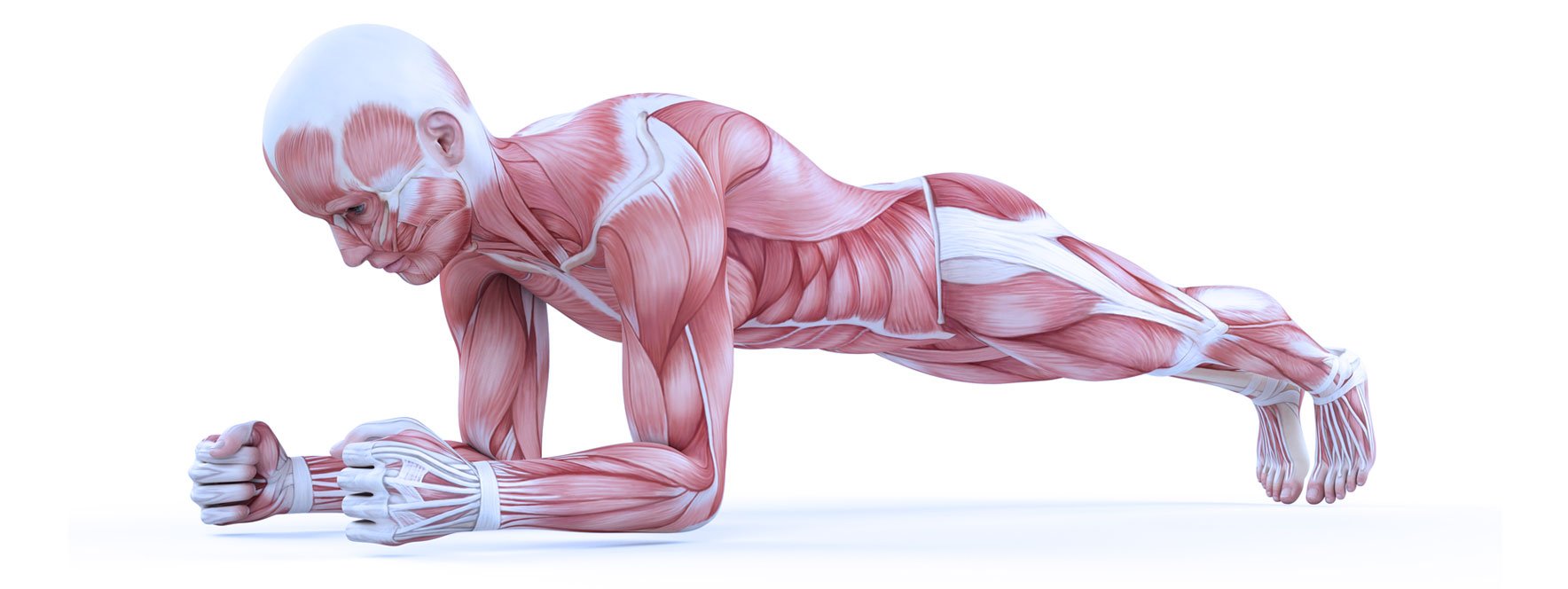Emilie Martel
Montreal masso-kinesitherapy
FASCIAS: LITTLE-KNOWN ALLIES
In your body, you are endowed with a type of tissue that maintains your organs and ensures your silhouette. It is the connective tissue, also called fascias. To help you visualize it, it is the white, slimy film that covers the meat (muscles) when the butcher has not yet removed it.
The fascia, as shown in the image above, is a fibrous network in the deep layers of your skin that can reach, in some places, several millimeters in thickness. Like cement and joints in a house, fascias act as a binder that gives your body its overall structure and shape.
Also, they serve as shock absorbers and protective sheaths for every bone, organ, nerve, vessel and muscle. Even the tiny fiber bundles inside a muscle are wrapped in a thin membrane of fascia. Without it, we would be as functional as a worm or a rag doll. Without it, we would be as functional as a worm or a rag doll, toneless and constantly fragile to instabilities and imbalances. And these are just a few of the roles that fascia plays in our bodies.
What role do fascias play?
In recent years, researchers have been interested in fascias and their role in our body, both at the normal and pathological levels. Their research tends to show a greater association between damage or dysfunction of the fascias and back pain or other musculoskeletal problems. This is because the fascia is lined with very fragile sensors that transmit pressure, pain and temperature signals to the brain.
Constraints, compressions and other stresses can produce micro-injuries which, when inflamed, can cause pain and violent suffering in the areas that the fascias serve. For example, it is these fascias, through their dehydration, that cause the famous headaches on a drunken night.
How to take care of your fascias? Five simple ways.
Do gentle stretching sessions. Yoga, such as Viniyoga, or stretching classes are good ways to maintain elasticity.
Jumping (trampoline, jumping rope, etc.) which helps to strengthen their cushioning function.
Perception exercises with slow, conscious movements of the spine. Spinal or posture training activities, for example, are very helpful in improving their sensory abilities.
Good daily hydration maintains their lubrication and elasticity. Dehydration is their main enemy. Alcohol and sugar in excess are harmful to them in the medium and long term because of their dehydrating powers, i.e. they dry up the body's water reserves. When fascias lack water, they tend to take on the appearance of a raisin skin.
Finally, massage therapy is an effective therapy to stimulate fluid exchange within the tissues, while providing release and relaxation to this network of life that is essential to the integrity of our musculoskeletal health. Our expertise in the human muscular network makes us invaluable for fascias stuck in the muscles and skin.
references
Geosciences Magazine Special Issue "Understanding Man and the World", << The Back >>. February-March 2017. P.62.
Émilie Martel, NDG and PLT Physiotherapist
emilie.martel@cliniquealtermed.com


